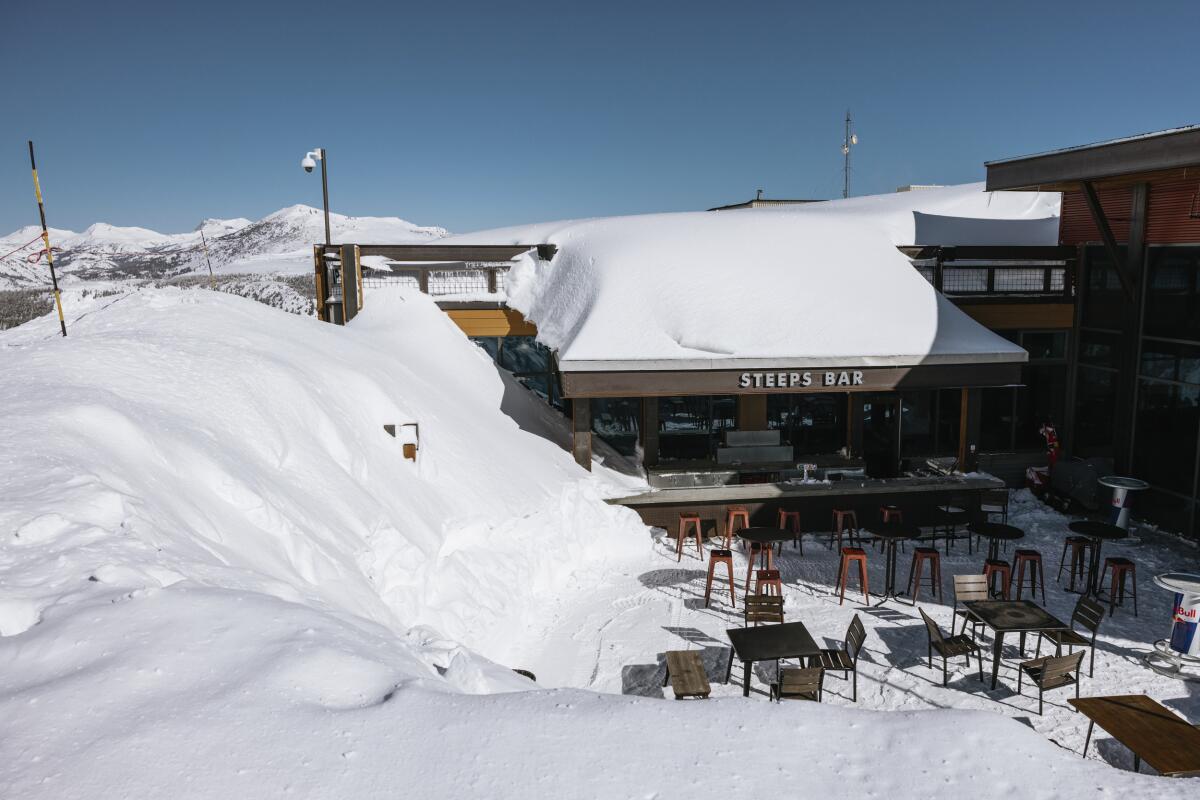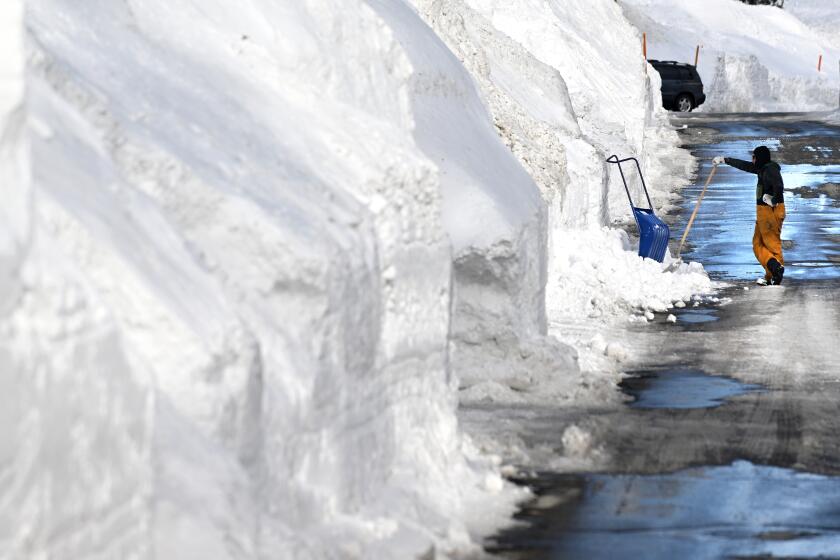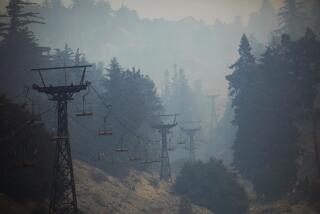It’s official. Mammoth Mountain’s had its snowiest season ever — and by a lot

As yet another major storm brings more rain and snow to California, Mammoth Mountain has broken its historic snowfall record — by a lot.
“With 28-30 [inches] of snow since yesterday afternoon, we just blew through our all-time season snowfall record of 668” inches, Mammoth Mountain said in an Instagram post Tuesday.
“We’ve received 695 [inches] of snowfall to date at Main Lodge, making the 22/23 season the biggest in our history!” The resort got an additional 7 inches on Wednesday, bringing the season total to 702 inches.
Snowpack in the Southern Sierra is already at record levels, with the statewide record within reach.
The resort, which draws more than 1 million skiers each winter, has announced it will extend its ski season in what Mammoth spokeswoman Lauren Burke said “is likely to be the best spring skiing and riding the eastern Sierra has ever seen.”
The typical season at Mammoth Mountain starts around the Thanksgiving holiday and ends Memorial Day.
Indeed, the resort’s Instagram post closed with optimism: “We’ll be open daily through at least July!”
Mammoth gets its heavy snow due to the altitude and topography surrounding it. In most years, Pacific storms hit the western slopes of the Sierra and rise into thinner atmosphere against the ridges. The clouds’ relative humidity climbs, ice particles congeal and snow falls — mostly in the highest, uninhabited interior — wrung dry by the 12,000- to 14,000-foot peaks.
But at the resort, storms roll up the deep gorge of the middle fork of the San Joaquin River, rising quickly to a wide break between the high peaks, known as the Mammoth Pass, at just 9,300 feet above sea level.
Clouds funnel through the pass, and dump snow with a vengeance, particularly on the volcanic Mammoth Mountain, which rises to 11,059 feet.
As record snows saddle the eastern Sierra Nevada, snowmelt threatens to inundate Los Angeles Department of Water and Power infrastructure.
Ski enthusiast Barbara Kelman sounded enthusiastic about Mammoth’s announcement in a Facebook post: “I’m ready to start skiing when it stops dumping!”
Though the snowfall is good news for skiers, it spells trouble for those who live on the mountain. A Times photographer captured photos of residents trying to dig out of “walls of snow” in early March.
Snowmelt will also be a concern as the weather warms up. In a worst-case scenario, massive snowmelt in the coming weeks could inundate towns along U.S. Highway 395, which winds along the base of snow-clad Sierra peaks that reach up to 14,000 feet.
At the same time, officials with the Los Angeles Department of Water and Power are worried that record runoff in Mono and Inyo counties could overwhelm the city’s network of aqueducts.
Times staff writers Louis Sahagún, Joe Mozingo and Christopher Reynolds contributed to this report.
More to Read
Sign up for Essential California
The most important California stories and recommendations in your inbox every morning.
You may occasionally receive promotional content from the Los Angeles Times.












